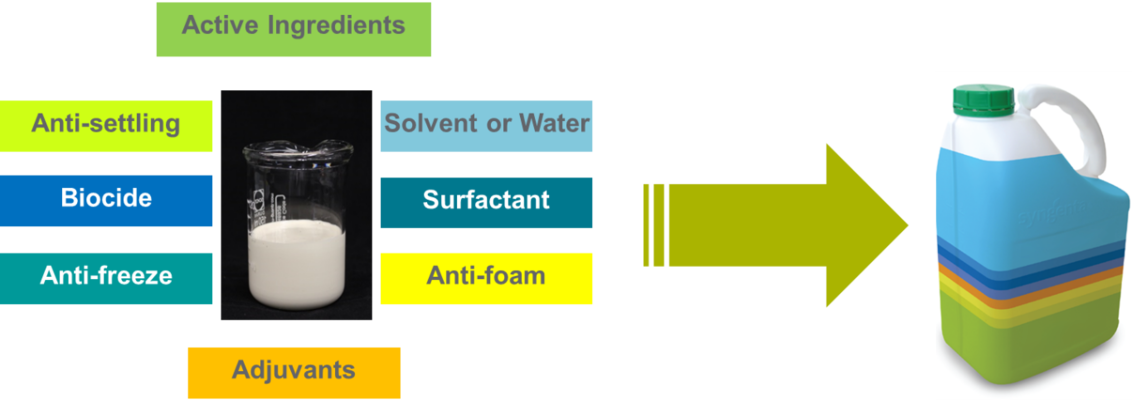What's in the bottle?
Everything is a formulation. From the products we use to clean our kitchens to the paint on our walls, to the milk you put on your cereal each morning. Yep. Even cows milk, which is basically fat dissolved in water, is a formulation.
Striking gold
It all starts when we discover a new active ingredient. Depending what the physical properties are of that active ingredient, whether it’s a powder, gum or a viscous liquid, our formulation experts have the ability to create the appropriate formulation that’s familiar to you:
- WG – water dispersible granule
- SC – suspension concentrate
- SL – soluble liquid
- EC – emulsifiable concentrate
- OD – oil dispersion
Thinking back to my previous blog, we get asked a lot about why we don’t bring more products to market or why it takes so long, but it is at this point it gets really tricky. Once we have the active ingredient and the appropriate formulation, we then have 2 million different components to sift through and just one of those variations is going to get to market. One in 2 million… You can see why this takes so long.
For it to be that one in two million, it has to jump a huge number of hurdles: is it safe for the user? Does it mix well? How does it affect the environment? What effects does it have on the crop? And, most importantly, does it actually work? The diagram below shows you a possible composition of what is actually in the bottle you purchase. Count them, there are eight different components in there.

The humble active ingredient
Some may think that this is the star of the show. I guess it is, but it’s only as good as the sum of its parts. A bit like a car. Yes the engine is important but you’re not going anywhere without a gearbox or wheels. Apparently not so humble.
While the active ingredient is the engine, the formulation, whatever it may be, a WG or SC, that’s what gives you your performance. The formulation makes sure the active ingredient dissolves in water, gives even coverage on the plant and can in some cases enhance uptake.
What are we working towards?
We as a crop protection company (and our competitors) mainly develop crop protection products for food crops: maize, cereals, soya. Some companies go a step further and develop products for smaller markets like vegetables, fruit and ornamentals. But as we know, an ornamental crop is not the same as a field of carrots and certainly not the same as a maize crop. For our ornamental product range, it’s important they meet the needs of the user, not just a product that happens to be effective on tulips or daffodils. We ensure that the products we bring to you actually work on ornamental crops. Not causing phytotox issues is a big one for example.
So, what’s the lesson here?
The next time you go to your chemical store, think about what has actually happened to get the bottle there. How many people have been involved, how many hurdles it had to jump through to make sure it was good enough for you and your crop. It’s not just a bottle of product, it’s a chemistry superstar that is absolutely full of science and we work every single day to make sure more make their way to you for a long time into the future.
Don't forget to look us up on social media:
Facebook: Syngenta Ornamentals UK
Instagram: syngenta_ornamentals
Twitter: @SyngentaOCUK
YouTube: Syngenta Ornamentals UK

